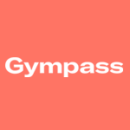
Customer onboarding that maintains relationships is similar to habit-building. Like going to the gym, it can be easy for users to drop off after the initial purchase if they aren’t engaged and can’t see the benefits of long-term loyalty.
Just as tours of the machines and regular progress check-ins on fitness goals can keep new gym members coming back, two New York City tech companies told Built In that early guidance and consistent communication around desired results are the keys to customer onboarding that maintains engagement.
Of course, the COVID-19 pandemic has not only disrupted gym routines, but also hundreds of industries. At Gympass, which focuses on the intersection of fitness and corporate HR, Head of Client Success Eugenia Kaplun said that the company has fostered even greater loyalty during the crisis via new products and clear communication that meets customers where they are.
Similarly, commercial real estate platform VTS recently integrated its service to allow landlords and brokers to offer virtual tours to tenants and complete the leasing process online. VTS also tailors the logistical aspects of onboarding for each customer on the platform, based on how they plan to use it to achieve their goals, VP of Implementation Services and Support Lily Engle said.
“This onboarding approach is much more consultative than data-focused,” Engle said. “It leads to more stakeholders engaged with our platform early in the process, rather than introduced to a fully-baked system at go-live.”
As with any fitness plan, both Gympass and VTS told Built In there’s no one-size-fits-all customer onboarding plan.
Gympass’ app-based corporate wellness benefit program involves several moving parts: over 2,000 corporate clients, their employees and over 55,000 gyms all over the world. That’s why Kaplun told Built In that an engaging customer onboarding process requires a clearly defined launch strategy and alignment with HR teams and fitness partners from the start.
The pandemic could have thrown a wrench into the gym-based business model. Instead, Kaplun said that Gympass switched from in-person to webinar onboarding for customers and created a variety of communication tools for HR teams to inform employees of timely new virtual product offerings, based on research that people are increasingly prioritizing mental health and also seeking at-home workouts.
What actions have you found to be most critical when building and implementing an effective and engaging customer onboarding program?
Our business model is unique in that we are B2B2C, because our customers are both HR teams and their employees. Given the complexity of this, it’s incredibly important to clearly define a launch strategy and align on a process upfront. This lets our HR clients know what to expect so they can weigh in on what will and won’t work, ensuring we communicate in a way that resonates with their employees.
Over the last few months, Gympass has significantly expanded its product offering to include mental wellness, on-demand and live-streaming classes and personal training, so it’s important to be able to communicate these updates clearly to employees.
What are some examples of improvements you've made to your customer onboarding?
With the shift to employees working from home, we had to adjust our activation process to introduce the product, shifting from in-person events to webinars. We started incorporating live workouts with fitness partners, and found that employees are more engaged and more likely to use the product over the long-term.
We are also supporting our HR clients by providing the tools to clearly communicate Gympass’ new product offerings for their employees. We created a digital launch tool kit, including email templates, infographics and guidelines to help our HR clients engage their employees.
How do you leverage the onboarding process to generate excitement about your brand and prevent apathy with your customers?
I was actually a Gympass user prior to joining the company, and I genuinely feel like this product can be life-changing on a personal level. I want to partner with HR organizations to help their employees live a more healthy lifestyle, whatever that might mean to them. We believe the customer experience is a crucial factor in gaining enthusiasm to help drive employee adoption. We started a program called Gympals where we ask HR teams to identify influencers within their workforce — HR leaders, local site reps or employee resource group leaders — and offer them advanced access to the program, introductory material and incentives for them to become advocates who generate excitement among their peers.
The pandemic also highlighted and accelerated the commercial real estate industry’s need for an online marketing and leasing platform. VTS responded by launching the VTS Market platform to help landlords and brokers attract, convert and retain tenants through virtual tours and verified content. With so many new customers adopting the service so quickly, Engle told Built In that interactive training resources were key to smooth onboarding. VTS also found that educational reference materials featuring formalized insights on best practices from existing customers are helpful for new customers to feel comfortable using the platform.
What actions have you found to be most critical when building and implementing an effective and engaging customer onboarding program?
For customer onboarding to be engaging, you have to build around an internally aligned vision of success at your organization. That means understanding the sales process, why customers are choosing your platform and what makes them successful after go-live. If your onboarding program is solely focused on getting a customer up and running, without also driving success around initial goals for the purchase or what makes customers successful in the long-term, onboarding will always be an uphill battle.
Things are always evolving, but understanding your “customer journey” and staying aligned with other teams along that journey will ultimately put the customer first. If you’re unsure of the outcomes your customers are looking for or the variables that make existing customers successful, that’s where you need to start. From there, the steps for onboarding — both technical and as they relate to change management — will be much easier to streamline and communicate with new customers.
What are some examples of improvements you've made to your customer onboarding?
The most impactful improvement we made to our customer onboarding process recently has been a heavier focus on change management during our onboarding process. With the motto of “Begin with the end in mind,” we work from day one to help clients build out and understand how they’ll use our platform at go-live and long after.
From there, we can tailor the more logistical aspects of onboarding — system integrations, data collection, user permissions — to the specific ways in which our customers will ultimately use the platform day to day. This onboarding approach is much more consultative than data-focused and leads to more stakeholders engaged with our platform early in the process, rather than introduced to a fully-baked system at go-live.
We’ve also worked hard to define “best in class” workflows and best-practice takeaways to share with customers based on what we’ve learned from the success of existing customers. New customers look to us to ensure that they’re leveraging the VTS software in a way that will produce the best results for their company, so it’s important that we come to the table with impactful suggestions and insights from day one. These best practices are formalized and shared with each customer in easy-to-reference formats to ensure everyone is comfortable with the new workflows as soon as they log in.
How do you leverage the onboarding process to generate excitement about your brand and prevent apathy or disengagement with your customers?
For new customers, onboarding of any software can either be a resource drag (how it’s often viewed) or an opportunity for team members to shape improved, efficient processes to free up their time for more important work. We recognize that the success of a customer really begins with our onboarding process: tying the project milestones back to business goals, leveraging educational or training resources ahead of go-live and keeping business sponsors in the loop while keeping a project on track.
When clear connections are drawn between project milestones and the customer’s ultimate business goals, it’s a lot easier to keep everyone engaged and on track.
Similarly, leveraging interactive, educational resources throughout onboarding helps customers become familiar with the platform ahead of their first login. We use our “VTS Academy” resources to introduce users to the platform and encourage them to get comfortable with the ins and outs as early as possible.
Finally, when we have strong alignment with our business sponsors and keep them in the loop on project progress, we can highlight the work their teams have accomplished and also ensure there’s top-down support for any changes we’re working to implement. They may not need to be in the weeds of the project, but tailoring regular updates around the things they care most about goes a long way to preserve those relationships through a process in which they may not typically be engaged. If anything doesn’t go according to plan during the onboarding, business sponsors can serve as escalation points or help remove any blockers so you can get things back on track.








